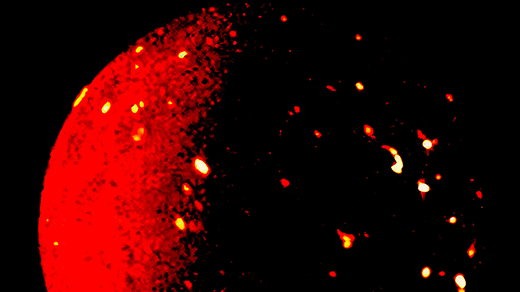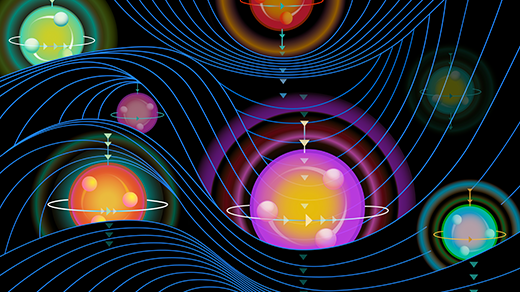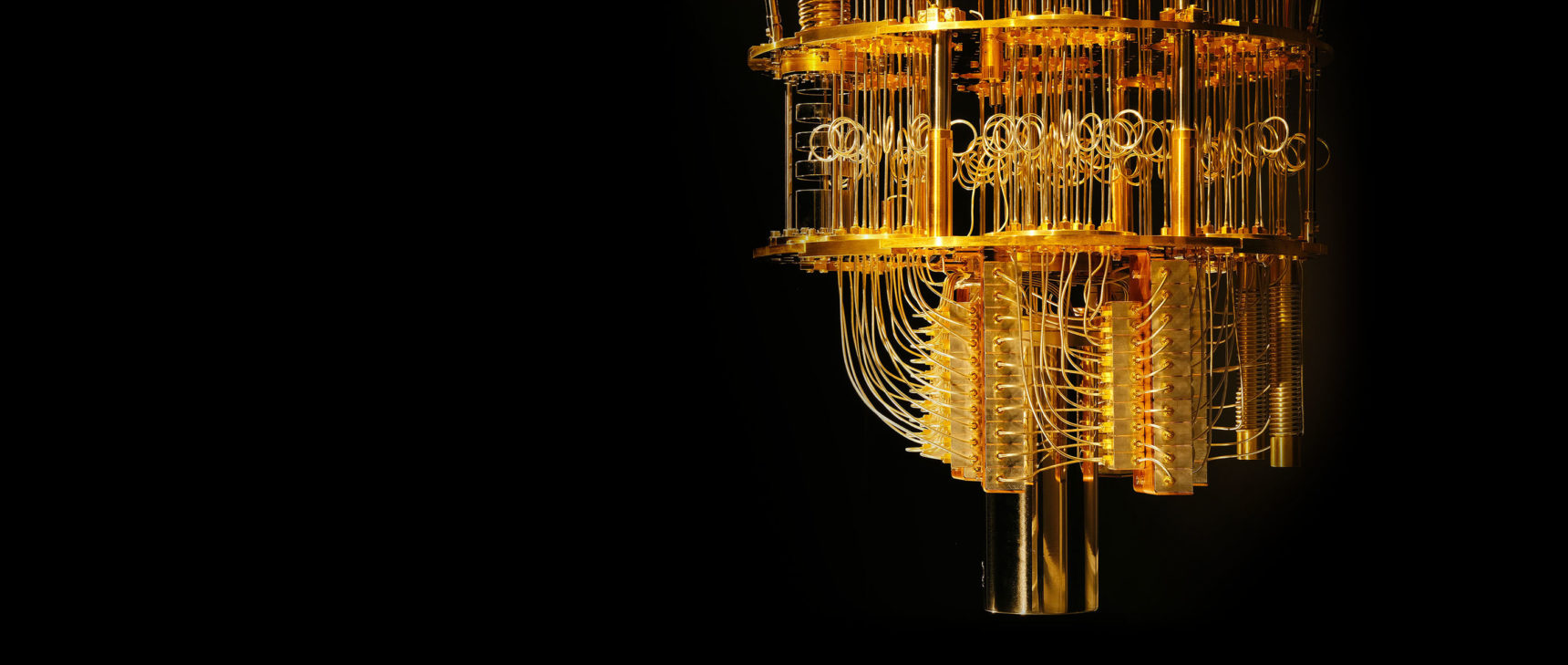Quantum Darwinism, an Idea to Explain Objective Reality, Passes First Tests
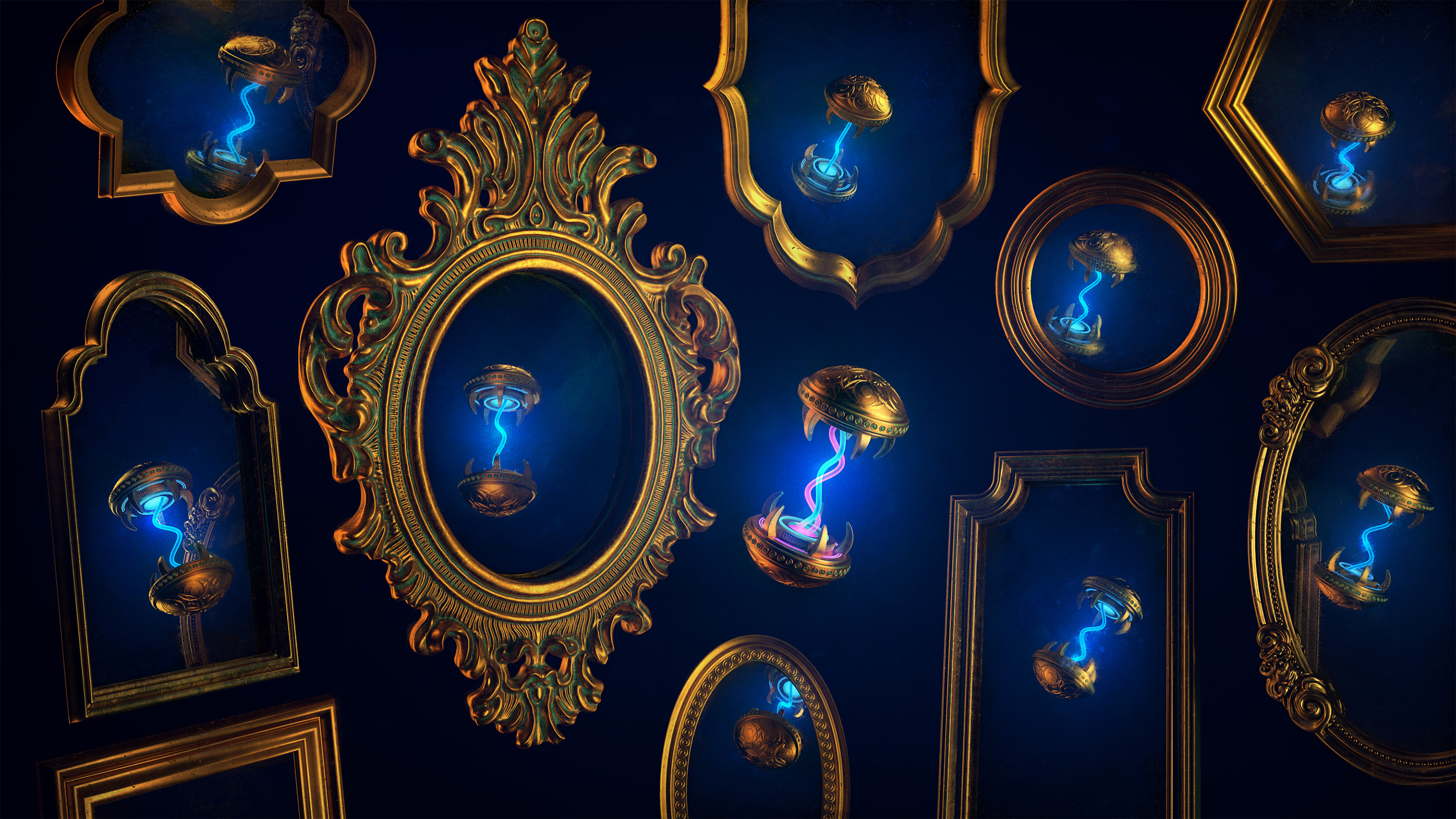
Olena Shmahalo/Quanta Magazine
Introduction
It’s not surprising that quantum physics has a reputation for being weird and counterintuitive. The world we’re living in sure doesn’t feel quantum mechanical. And until the 20th century, everyone assumed that the classical laws of physics devised by Isaac Newton and others — according to which objects have well-defined positions and properties at all times — would work at every scale. But Max Planck, Albert Einstein, Niels Bohr and their contemporaries discovered that down among atoms and subatomic particles, this concreteness dissolves into a soup of possibilities. An atom typically can’t be assigned a definite position, for example — we can merely calculate the probability of finding it in various places. The vexing question then becomes: How do quantum probabilities coalesce into the sharp focus of the classical world?
Physicists sometimes talk about this changeover as the “quantum-classical transition.” But in fact there’s no reason to think that the large and the small have fundamentally different rules, or that there’s a sudden switch between them. Over the past several decades, researchers have achieved a greater understanding of how quantum mechanics inevitably becomes classical mechanics through an interaction between a particle or other microscopic system and its surrounding environment.
One of the most remarkable ideas in this theoretical framework is that the definite properties of objects that we associate with classical physics — position and speed, say — are selected from a menu of quantum possibilities in a process loosely analogous to natural selection in evolution: The properties that survive are in some sense the “fittest.” As in natural selection, the survivors are those that make the most copies of themselves. This means that many independent observers can make measurements of a quantum system and agree on the outcome — a hallmark of classical behavior.
This idea, called quantum Darwinism (QD), explains a lot about why we experience the world the way we do rather than in the peculiar way it manifests at the scale of atoms and fundamental particles. Although aspects of the puzzle remain unresolved, QD helps heal the apparent rift between quantum and classical physics.
Only recently, however, has quantum Darwinism been put to the experimental test. Three research groups, working independently in Italy, China and Germany, have looked for the telltale signature of the natural selection process by which information about a quantum system gets repeatedly imprinted on various controlled environments. These tests are rudimentary, and experts say there’s still much more to be done before we can feel sure that QD provides the right picture of how our concrete reality condenses from the multiple options that quantum mechanics offers. Yet so far, the theory checks out.
Survival of the Fittest
At the heart of quantum Darwinism is the slippery notion of measurement — the process of making an observation. In classical physics, what you see is simply how things are. You observe a tennis ball traveling at 200 kilometers per hour because that’s its speed. What more is there to say?
In quantum physics that’s no longer true. It’s not at all obvious what the formal mathematical procedures of quantum mechanics say about “how things are” in a quantum object; they’re just a prescription telling us what we might see if we make a measurement. Take, for example, the way a quantum particle can have a range of possible states, known as a “superposition.” This doesn’t really mean it is in several states at once; rather, it means that if we make a measurement we will see one of those outcomes. Before the measurement, the various superposed states interfere with one another in a wavelike manner, producing outcomes with higher or lower probabilities.
But why can’t we see a quantum superposition? Why can’t all possibilities for the state of a particle survive right up to the human scale?
The answer often given is that superpositions are fragile, easily disrupted when a delicate quantum system is buffeted by its noisy environment. But that’s not quite right. When any two quantum objects interact, they get “entangled” with each other, entering a shared quantum state in which the possibilities for their properties are interdependent. So say an atom is put into a superposition of two possible states for the quantum property called spin: “up” and “down.” Now the atom is released into the air, where it collides with an air molecule and becomes entangled with it. The two are now in a joint superposition. If the atom is spin-up, then the air molecule might be pushed one way, while, if the atom is spin-down, the air molecule goes another way — and these two possibilities coexist. As the particles experience yet more collisions with other air molecules, the entanglement spreads, and the superposition initially specific to the atom becomes ever more diffuse. The atom’s superposed states no longer interfere coherently with one another because they are now entangled with other states in the surrounding environment — including, perhaps, some large measuring instrument. To that measuring device, it looks as though the atom’s superposition has vanished and been replaced by a menu of possible classical-like outcomes that no longer interfere with one another.
This process by which “quantumness” disappears into the environment is called decoherence. It’s a crucial part of the quantum-classical transition, explaining why quantum behavior becomes hard to see in large systems with many interacting particles. The process happens extremely fast. If a typical dust grain floating in the air were put into a quantum superposition of two different physical locations separated by about the width of the grain itself, collisions with air molecules would cause decoherence — making the superposition undetectable — in about 10−31 seconds. Even in a vacuum, light photons would trigger such decoherence very quickly: You couldn’t look at the grain without destroying its superposition.
Surprisingly, although decoherence is a straightforward consequence of quantum mechanics, it was only identified in the 1970s, by the late German physicist Heinz-Dieter Zeh. The Polish-American physicist Wojciech Zurek further developed the idea in the early 1980s and made it better known, and there is now good experimental support for it.
But to explain the emergence of objective, classical reality, it’s not enough to say that decoherence washes away quantum behavior and thereby makes it appear classical to an observer. Somehow, it’s possible for multiple observers to agree about the properties of quantum systems. Zurek, who works at Los Alamos National Laboratory in New Mexico, argues that two things must therefore be true.
First, quantum systems must have states that are especially robust in the face of disruptive decoherence by the environment. Zurek calls these “pointer states,” because they can be encoded in the possible states of a pointer on the dial of a measuring instrument. A particular location of a particle, for instance, or its speed, the value of its quantum spin, or its polarization direction can be registered as the position of a pointer on a measuring device. Zurek argues that classical behavior — the existence of well-defined, stable, objective properties — is possible only because pointer states of quantum objects exist.
What’s special mathematically about pointer states is that the decoherence-inducing interactions with the environment don’t scramble them: Either the pointer state is preserved, or it is simply transformed into a state that looks nearly identical. This implies that the environment doesn’t squash quantumness indiscriminately but selects some states while trashing others. A particle’s position is resilient to decoherence, for example. Superpositions of different locations, however, are not pointer states: Interactions with the environment decohere them into localized pointer states, so that only one can be observed. Zurek described this “environment-induced superselection” of pointer states in the 1980s.
But there’s a second condition that a quantum property must meet to be observed. Although immunity to interaction with the environment assures the stability of a pointer state, we still have to get at the information about it somehow. We can do that only if it gets imprinted in the object’s environment. When you see an object, for example, that information is delivered to your retina by the photons scattering off it. They carry information to you in the form of a partial replica of certain aspects of the object, saying something about its position, shape and color. Lots of replicas are needed if many observers are to agree on a measured value — a hallmark of classicality. Thus, as Zurek argued in the 2000s, our ability to observe some property depends not only on whether it is selected as a pointer state, but also on how substantial a footprint it makes in the environment. The states that are best at creating replicas in the environment — the “fittest,” you might say — are the only ones accessible to measurement. That’s why Zurek calls the idea quantum Darwinism.
It turns out that the same stability property that promotes environment-induced superselection of pointer states also promotes quantum Darwinian fitness, or the capacity to generate replicas. “The environment, through its monitoring efforts, decoheres systems,” Zurek said, “and the very same process that is responsible for decoherence should inscribe multiple copies of the information in the environment.”
Information Overload
It doesn’t matter, of course, whether information about a quantum system that gets imprinted in the environment is actually read out by a human observer; all that matters for classical behavior to emerge is that the information get there so that it could be read out in principle. “A system doesn’t have to be under study in any formal sense” to become classical, said Jess Riedel, a physicist at the Perimeter Institute for Theoretical Physics in Waterloo, Canada, and a proponent of quantum Darwinism. “QD putatively explains, or helps to explain, all of classicality, including everyday macroscopic objects that aren’t in a laboratory, or that existed before there were any humans.”
About a decade ago, while Riedel was working as a graduate student with Zurek, the two showed theoretically that information from some simple, idealized quantum systems is “copied prolifically into the environment,” Riedel said, “so that it’s necessary to access only a small amount of the environment to infer the value of the variables.” They calculated that a grain of dust one micrometer across, after being illuminated by the sun for just one microsecond, will have its location imprinted about 100 million times in the scattered photons.
It’s because of this redundancy that objective, classical-like properties exist at all. Ten observers can each measure the position of a dust grain and find that it’s in the same location, because each can access a distinct replica of the information. In this view, we can assign an objective “position” to the speck not because it “has” such a position (whatever that means) but because its position state can imprint many identical replicas in the environment, so that different observers can reach a consensus.
What’s more, you don’t have to monitor much of the environment to gather most of the available information — and you don’t gain significantly more by monitoring more than a fraction of the environment. “The information one can gather about the system quickly saturates,” Riedel said.
This redundancy is the distinguishing feature of QD, explained Mauro Paternostro, a physicist at Queen’s University Belfast who was involved in one of the three new experiments. “It’s the property that characterizes the transition towards classicality,” he said.
Quantum Darwinism challenges a common myth about quantum mechanics, according to the theoretical physicist Adán Cabello of the University of Seville in Spain: namely, that the transition between the quantum and classical worlds is not understood and that measurement outcomes cannot be described by quantum theory. On the contrary, he said, “quantum theory perfectly describes the emergence of the classical world.”
Just how perfectly remains contentious, however. Some researchers think decoherence and QD provide a complete account of the quantum-classical transition. But although these ideas attempt to explain why superpositions vanish at large scales and why only concrete “classical” properties remain, there’s still the question of why measurements give unique outcomes. When a particular location of a particle is selected, what happens to the other possibilities inherent in its quantum description? Were they ever in any sense real? Researchers are compelled to adopt philosophical interpretations of quantum mechanics precisely because no one can figure out a way to answer that question experimentally.
Into the Lab
Quantum Darwinism looks fairly persuasive on paper. But until recently that was as far as it got. In the past year, three teams of researchers have independently put the theory to the experimental test by looking for its key feature: how a quantum system imprints replicas of itself on its environment.
The experiments depended on the ability to closely monitor what information about a quantum system gets imparted to its environment. That’s not feasible for, say, a dust grain floating among countless billions of air molecules. So two of the teams created a quantum object in a kind of “artificial environment” with only a few particles in it. Both experiments — one by Paternostro and collaborators at Sapienza University of Rome, and the other by the quantum-information expert Jian-Wei Pan and co-authors at the University of Science and Technology of China — used a single photon as the quantum system, with a handful of other photons serving as the “environment” that interacts with it and broadcasts information about it.
Both teams passed laser photons through optical devices that could combine them into multiply entangled groups. They then interrogated the environment photons to see what information they encoded about the system photon’s pointer state — in this case its polarization (the orientation of its oscillating electromagnetic fields), one of the quantum properties able to pass through the filter of quantum Darwinian selection.
A key prediction of QD is the saturation effect: Pretty much all the information you can gather about the quantum system should be available if you monitor just a handful of surrounding particles. “Any small fraction of the interacting environment is enough to provide the maximal classical information about the observed system,” Pan said.
The two teams found precisely this. Measurements of just one of the environment photons revealed a lot of the available information about the system photon’s polarization, and measuring an increasing fraction of the environment photons provided diminishing returns. Even a single photon can act as an environment that introduces decoherence and selection, Pan explained, if it interacts strongly enough with the lone system photon. When interactions are weaker, a larger environment must be monitored.
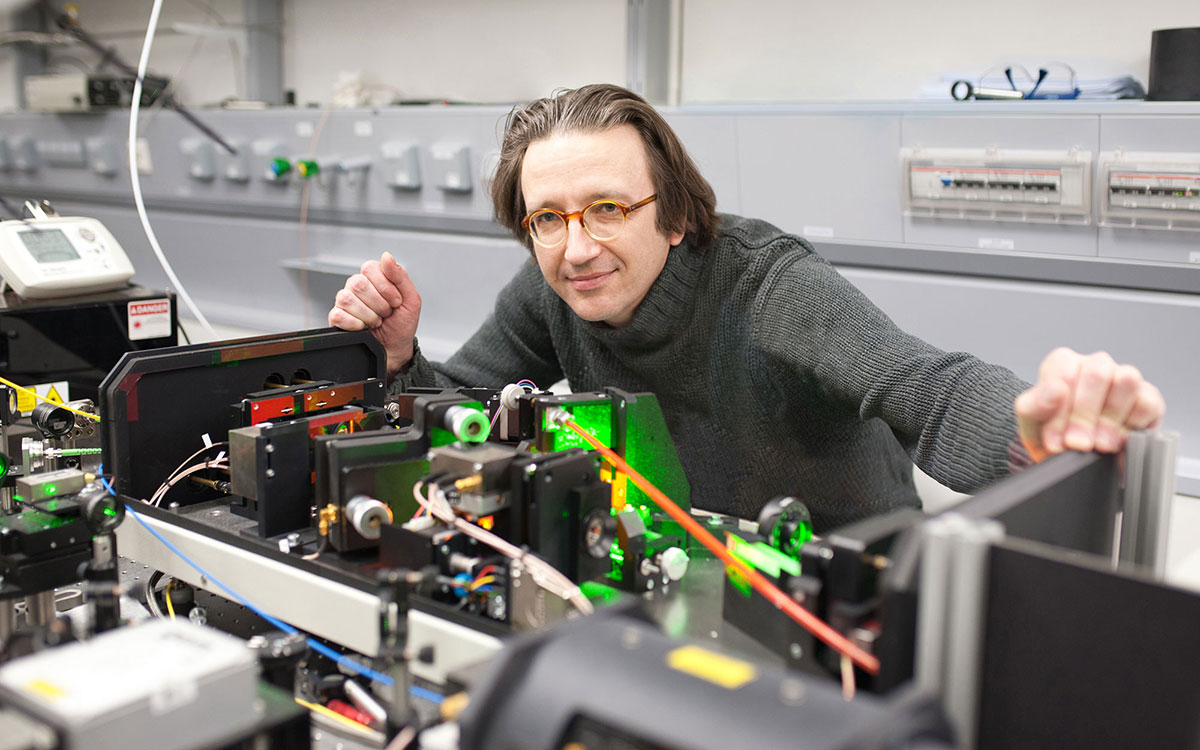
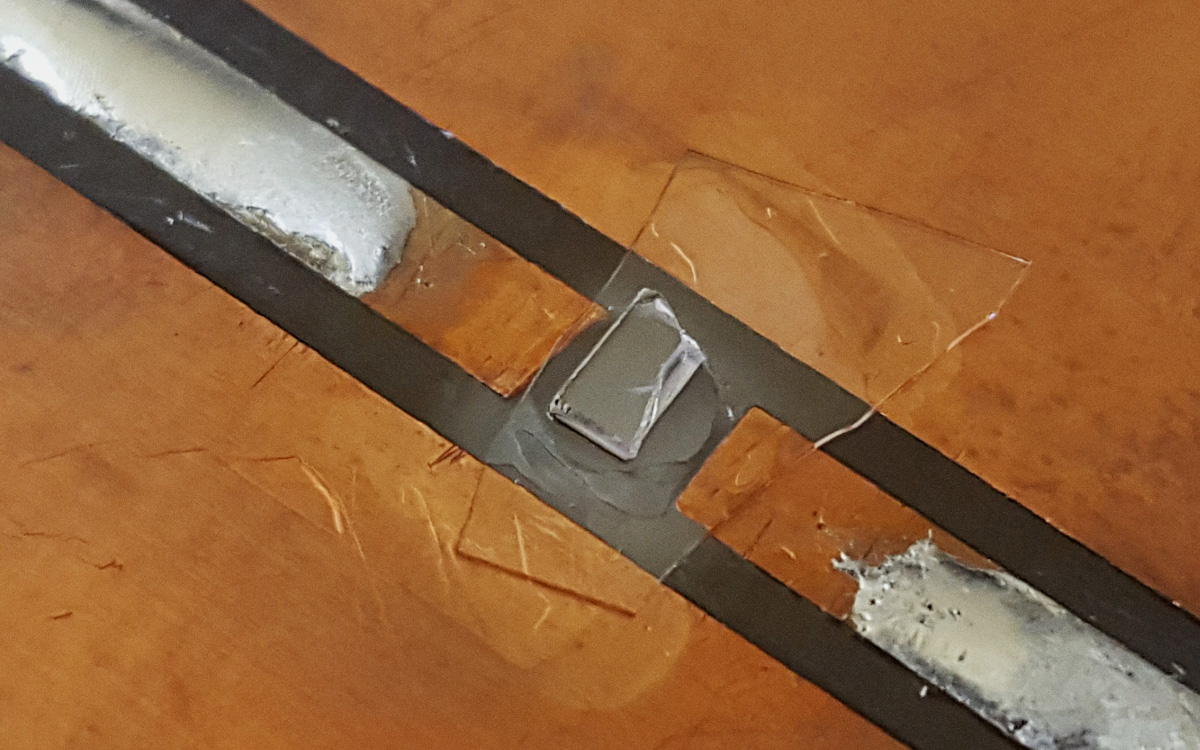
A team led by Fedor Jelezko (top), director of the Institute for Quantum Optics at Ulm University in Germany, probed the state of a nitrogen “defect” inside a synthetic diamond by monitoring surrounding carbon atoms. Their findings confirmed predictions of a theory known as quantum Darwinism.
A team led by Fedor Jelezko, director of the Institute for Quantum Optics at Ulm University in Germany, probed the state of a nitrogen “defect” inside a synthetic diamond (shown mounted on the right) by monitoring surrounding carbon atoms. Their findings confirmed predictions of a theory known as quantum Darwinism.
Ulm University
The third experimental test of QD, led by the quantum-optical physicist Fedor Jelezko at Ulm University in Germany in collaboration with Zurek and others, used a very different system and environment, consisting of a lone nitrogen atom substituting for a carbon atom in the crystal lattice of a diamond — a so-called nitrogen-vacancy defect. Because the nitrogen atom has one more electron than carbon, this excess electron cannot pair up with those on neighboring carbon atoms to form a chemical bond. As a result, the nitrogen atom’s unpaired electron acts as a lone “spin,” which is like an arrow pointing up or down or, in general, in a superposition of both possible directions.
This spin can interact magnetically with those of the roughly 0.3% of carbon nuclei present in the diamond as the isotope carbon-13, which, unlike the more abundant carbon-12, also has spin. On average, each nitrogen-vacancy spin is strongly coupled to four carbon-13 spins within a distance of about 1 nanometer.
By controlling and monitoring the spins using lasers and radio-frequency pulses, the researchers could measure how a change in the nitrogen spin is registered by changes in the nuclear spins of the environment. As they reported in a preprint last September, they too observed the characteristic redundancy predicted by QD: The state of the nitrogen spin is “recorded” as multiple copies in the surroundings, and the information about the spin saturates quickly as more of the environment is considered.
Zurek says that because the photon experiments create copies in an artificial way that simulates an actual environment, they don’t incorporate a selection process that picks out “natural” pointer states resilient to decoherence. Rather, the researchers themselves impose the pointer states. In contrast, the diamond environment does elicit pointer states. “The diamond scheme also has problems, because of the size of the environment,” Zurek added, “but at least it is, well, natural.”
Generalizing Quantum Darwinism
So far, so good for quantum Darwinism. “All these studies see what is expected, at least approximately,” Zurek said.
Riedel says we could hardly expect otherwise, though: In his view, QD is really just the careful and systematic application of standard quantum mechanics to the interaction of a quantum system with its environment. Although this is virtually impossible to do in practice for most quantum measurements, if you can sufficiently simplify a measurement, the predictions are clear, he said: “QD is most like an internal self-consistency check on quantum theory itself.”
But although these studies seem consistent with QD, they can’t be taken as proof that it is the sole description for the emergence of classicality, or even that it’s wholly correct. For one thing, says Cabello, the three experiments offer only schematic versions of what a real environment consists of. What’s more, the experiments don’t cleanly rule out other ways to view the emergence of classicality. A theory called “spectrum broadcasting,” for example, developed by Pawel Horodecki at the Gdańsk University of Technology in Poland and collaborators, attempts to generalize QD. Spectrum broadcast theory (which has only been worked through for a few idealized cases) identifies those states of an entangled quantum system and environment that provide objective information that many observers can obtain without perturbing it. In other words, it aims to ensure not just that different observers can access replicas of the system in the environment, but that by doing so they don’t affect the other replicas. That too is a feature of genuinely “classical” measurements.
Horodecki and other theorists have also sought to embed QD in a theoretical framework that doesn’t demand any arbitrary division of the world into a system and its environment, but just considers how classical reality can emerge from interactions between various quantum systems. Paternostro says it might be challenging to find experimental methods capable of identifying the rather subtle distinctions between the predictions of these theories.
Still, researchers are trying, and the very attempt should refine our ability to probe the workings of the quantum realm. “The best argument for performing these experiments probably is that they are good exercise,” Riedel said. “Directly illustrating QD can require some very difficult measurements that will push the boundaries of existing laboratory techniques.” The only way we can find out what measurement really means, it seems, is by making better measurements.
This article was reprinted on Wired.com.
